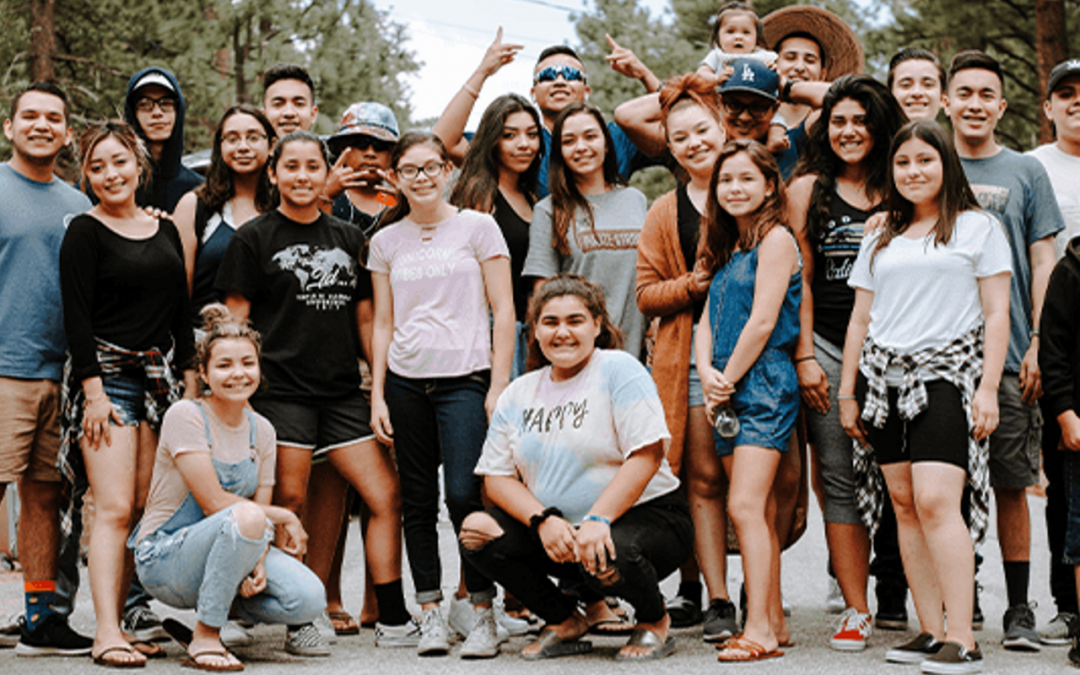
09 | Philanthropic Collective Action to Address Homelessness
According to the National Alliance to End Homelessness, in 2020, there were over half a million people experiencing homelessness on our streets and in shelters in America. Seventy percent were individuals, and the remaining 30 percent were families with children. They lived in every state and territory, and they include people from every gender, racial and ethnic group.
However, some groups are far more likely than others to become homeless. In the same year, The U.S. Department of Housing and Urban Development Annual Homeless Assessment Report to Congress revealed that African Americans are overrepresented in the population of people experiencing homelessness compared to their share of the overall US population.
A recent report by the Chicago Coalition for the homeless found at least 65,000 people were experiencing homelessness in Chicago in 2020, including those who temporarily stayed with others in addition to people living in shelters and on the street. Additionally, similar to national data, although African American Chicagoans make up roughly 30 percent of the city’s population, they represent 70 percent of the City’s homeless. For housing advocates and activists, ending homelessness is connected to the moral imperative to end racial inequities within our society’s systems, policies, and social practices.
READ MORE
Today, we’ll be talking with Emily Krisciunas (Chris-shoe-nas), Director of Chicago Funders Together to End Homelessness. Incubated at Michael Reese (a public foundation) since 2020, CFTEH seeks to foster a person-centered, ecosystem approach to ending homelessness that reaches across systems and sectors.
CFTEH is one of several local networks of Funders Together to End Homelessness – a national network of funders supporting strategic, innovative, and effective solutions to homelessness. CFTEH has more than 30 members and is comprised of a shared table of family foundations, community foundations, corporate philanthropies, and the local United
Way. The collaborative is guided by a steering committee of four funders and two full-time staff. Collectively, CFTEH members have directed more than $50 million over the last two years towards efforts to prevent and end homelessness in Chicago, supporting more than 200 organizations across the region since 2020. In 2022, CFTEH launched its first pooled fund effort—the Housing Justice Fund—which makes grants to support advocacy, community organizing, and narrative change efforts.
In our conversation, we’ll learn about how the local philanthropic sector came together to co-create a strategy to end homelessness in Chicago with providers, advocates, government, community partners, and residents with lived experience.
Welcome Emily!
QUESTIONS & ANSWERS
1. I’d like to start by having you share with us the origin story of CFTEH.
Thanks for having me. Nice to be with you. I think that CFTEH began as a more informal network of, maybe, 10 or 12 local foundations. So much of this groundwork was laid long before I came onboard in 2020. And I think that this group grew out of this observation that philanthropy has a ton of resources, and a ton of power to help end homelessness, but that those resources aren’t always well coordinated or optimized. Both within philanthropy and with partners in the public sector.
And around the same time, we had colleagues who were connected to the organization that you mentioned in the introduction, Funders Together to End Homelessness at the national level, and were starting to see these local collaboratives pop up in other communities. There was one really notable one in Los Angeles called Home for Good that I think was particularly influential. And so this group of funders started to be interested in replicating that collaborative model here in Chicago. And in order to do that, this group realized that they would need a home, sort of a backbone – administratively and operationally for that work, and we were so lucky that Michael Reese Health Trust was beginning the process to becoming a public charity, which gave them some new resources at their disposal. They could incubate new initiatives; they could advocate in a different way. So, in 2019, before I came onboard, they raised their hand within the group and volunteered to be the home for CFTEH, which enabled the group to hire their first dedicated staff person, which became me.
2. In 2022, CFTEH created its first strategic plan. I understand you conducted a series of listening sessions with community and stakeholders to begin the process. What were the key takeaways from those sessions?
It’s a great question and felt like an important phase in CFTEH’s work. There were two big pushes around listening. The first one came when I started in the role. As a precursor to strategic planning, I met one-on-one with all of the funders who were participating in the collaborative, and I wanted to get a sense of how they thoughts about addressing homelessness, and what their own grantmaking priorities were, and what their motivations were to be in the group. I remember this thing that Marianne Philbin, who is a colleague at Pierce Family Foundation kept saying, which was, “CFTEH should be doing things that it can uniquely do as a group that individual foundations can’t do on their own”.
And that felt like a recurring theme in all of the conversations that I had with funders. But what I think wasn’t clear from the beginning was what exactly that “what” be? What was the unique contribution that CFTEH would have that individual foundations could not do on their own, but that became a guiding set of questions that informed the second round of listening that we did in 2022, which as you said, was focused not within our philanthropic community, but instead on all of our external partners.
So, you’re exactly right. We did, with your help, interviews and focus groups with at least 50 community stakeholders, and these are people with lived expertise of homelessness, advocates, colleagues in government, policy makers, service providers, and I think there were a bunch of important takeaways from that experience. They really centered around the role that philanthropy has to play in naming and addressing the role that racism has in homelessness, and drawing that connection a little more clearly. They wanted philanthropy’s help in promoting this more expansive definition of homelessness, not the often narrow federal government definition of homelessness that is just a person maybe, staying on the street, or in a shelter or on the train, but instead this much more expansive experience of people who are maybe couch surfing, or living doubled-up or under the threat of violence in their home.
They were really interested in seeing CFTEH think about its power and how it wields it and how it shifts it to communities who are impacted by homelessness. Partners also had some really helpful critiques, frankly, about the way philanthropy often does grantmaking. About how arduous and burdensome that process can be. How inflexible it can be. That was really something that we saw reinforced in our own grantmaking data that CFTEH reflected on in its strategic planning process where we saw a lot of grants being made just a single year at a time, often restricted. So, we got a lot of feedback from community stakeholders about the role that CFTEH could play in maybe helping model grantmaking in a different way, and nudging and supporting our foundation members in making their grantmaking processes around ending homelessness as flexible and accessible as possible.
3. I understand that from those listening sessions Emerged a set of “guiding principles”. Can you share those principles with us that will guide the work of CFTEH for the next three years?
We landed on four of them, and looking back I can see the way that each of them feels really anchored to the community feedback that I just highlighted for you. So, the guiding principles in the CFTEH plan are:
- To lead with and center racial equity in housing justice in all of the work that we do.
- The second one is on Targeted Universalism. An acknowledgement that homelessness is so disproportionately experienced by communities of color, and particularly Black and African American communities, and so approaches to ending homelessness ideally will benefit all people experiencing homelessness but should really be targeted to the groups and communities who are experiencing it the most, disproportionately.
- The third one is around centering people with lived expertise in homelessness and housing instability in all of the decision-making that we do. And we’re exploring all day, every day, different ways to do that in the work of CFTEH.
- And then the fourth one is around this idea that, fostering a person-centered, ecosystem approach to ending homelessness, as you mentioned in the intro. This idea that homelessness is this idea that is really simple, in that the solution is housing, but that it is [also] really complex, in that all of these different systems, frankly, are failing people who come to experience homelessness and are often interacting with the justice system, or the employment system or education system, but at the end of the day it is still a person a neighbor who is experiencing homelessness and that we have to keep the person at the center, even though we’re talking about lots of complex systems that are contributing to that persons, perhaps, lack of access to housing.
4. What can you share about CFTEH’s strategic plan, including goals and objectives?
Our north star in the strategic plan is for CFTEH, this community of funders, to contribute to a significant reduction in the number of people experiencing homelessness in the Chicago region. With that focus, in particular on Black communities who are experiencing homelessness most disproportionately.
In the theory of change that CFTEH has developed for its strategic plan, it suggests that if CFTEH leans into these four big functions that we identified for ourselves as an educator, as an advocate, as a model (as I said earlier for our members) and as a convener, we can help advance these three big categories of change.
One related to more equitable housing policy, another around shifting power to communities most impacted by homelessness, and the third one is around bringing greater alignment into these often disconnected and disjointed sectors and systems. To your point you just made, that are often contributing to a person’s experience of homelessness.
And I love that CFTEH, in its pursuit of these goals laid out in the strategic plan gets to be this sort of lab for new ideas. We really can be this model for new ways of working. We learn a lot from other communities that are experimenting in the way that we are, from other funder networks, and communities like New York, LA and Baltimore and the Bay area that are often piloting really different public/private partnerships that we aspire to replicate here in Chicago. So, even though we have a strategic plan, we’re trying to make it vibrant and useful as is possible in the work that we’re doing every day.
Tell us more about the Housing Justice “Pooled” Fund and how it ties into the strategic plan.
Yeah, I’m so excited! So excited about this effort. What’s interesting is that we don’t necessarily set out in the early days of the strategic planning process to have a pooled fund. It wasn’t really part of the early conversations about what CFTEH would be, and I think the more we got into the planning process, and the more we reflected on what our members are funding currently, and what our stakeholders really wanted CFTEH to do, the more a pooled fund emerged as a really interesting idea that could fill some of the important gaps.
So the Housing Justice Fund, as you said, is a pooled fund, and what that means is that a bunch of our members, around 15 of our CFTEH members, have collectively pooled funding at Michael Reese, as our fiscal sponsor, to launch this grantmaking effort. It’s a $2 million dollar pooled fund, and it is specifically focused on advocacy, community organizing and narrative change and public awareness work related to preventing and ending homelessness.
And the reason we focused on that cluster of things is because we saw that it really wasn’t being funded. That showed up in a lot of grantmaking data that we looked at from our members., We saw that, maybe, 1 or 2 percent of the groups collective grantmaking was supporting that group of things I just mentioned. I also had a ton of conversations with people working in the advocacy space who talked about how hard it was to find funding for their work and it just started to emerge so clearly as the perfect gap for CFTEH to fill.
The fund is focused on new and emerging and often small and BIPOC-led organizations that are doing this work. We really tried to, in the application process, to do outreach to organizations that were not receiving funding from any of our members. We are trying to build relationships with new organizations who might have had a really difficult time accessing philanthropy in the past.
The last thing I would say is that we tried to design the process really differently. The former grant writer in me, my heart sings around this part of it because we, for instance, designed a process where applicants could choose how they made their requests. They could submit it in writing if that felt like a good fit to them, if they happened to have a grant writer on staff. And if they didn’t, or if they felt like using their voice and their story to make their request was a better fit they, instead, could hop on a call with CFTEH staff and we would ask them a set of questions and guide then through, essentially, the application. And then we would, as staff, take on the responsibility of documenting and preparing the group’s application, then sharing it back with them for them to review, approve and finalize.
We got a ton of takers, first of all, for that kind of format of application, and at least in the first round, a lot of positive feedback about being able to lower barriers to applying. Especially for really tiny, volunteer-led organizations who may not have a grant writer on staff. And then, for organizations, they also then were able to have a narrative prepared describing their work that they felt really good about that, ideally, they can use for applications with other foundations as well.
5. So, the pooled fund has started, and you’ve started issuing grants?
We just announced our first round of grants in December, 2022. We announced $1.2 million in the first round to 11 partners that we’re so excited about. They are all doing such incredible work. Some of them are really focused on policy at the city level or state level, either passing city or state ordinance or enforcing one. They are, in other cases, focused on tenant organizing efforts, building the collective power of tenants in a specific building or a specific neighborhood. And then others are focused on narrative change aspect of the fund I mentioned. Trying to challenge conventional narratives about what homelessness looks like, who experiences it and why they experience it, and are using first-person storytelling or art-making or other forms of documentation in order to do that. So, we’re so excited to be working with that group of partners, and we’re planning to do another round of grant making in the spring or summer of this year.
6. A great deal of growth has happened in 2022. What can we expect from you and your team in 2023?
If CFTEH is going to do some cool, innovative things, ideally, we’ll do those things and then document what we’re learning about them. We learned a lot in the first round of the Housing Justice Fund process about what we can do way better in subsequent rounds and so we’re really interested in documenting those learnings and ways to share them, whether its through social media, like you mentioned, or blog posts. I’m so lucky I’m getting the opportunity later this month to be on a panel at the National Funders Together to End Homelessness conference in California. I’ll have an opportunity to talk about this work there. But yes, I think that what we’re trying to do is learn a lot. Learn and make mistakes and share what we’re learning with our members and partners, both regionally and across the country.
And, in terms of 2023, it’s an exciting question. I think a lot of things come to mind. The first is that CFTEH doubled in size last year, which was a thrill to me, so we hired a new colleague, Kathy Neidorowski, who I have to shout out. She came onboard last year as our CFTEH Program Coordinator and brings this incredible expertise and background as a social worker and a macro social worker, so really thinking about the ways that complex systems interact with each other and impact a person or household experiencing homelessness. So totally thrilled to think about 2023 and what we can do as a small but mighty team of two.
And I think the area of growth that I’m most excited about for CFTEH is related to the Housing Justice Fund, in a way because it’s about all of the other resources and power that CFTEH has to advance the collective goals of our grantees through the fund. Because we have a lot of ways that we can advocate ourselves. We can join in the advocacy of our grantee partners, and I think in 2023, we’re excited to be a lot more visible, vocal and external in that way, and find other ways to support this cohort of grantee partners through the Housing Justice Fund in lots of ways beyond the funding. It’s another piece of feedback that we heard a lot from community stakeholders. It’s like, “Philanthropy, you have relationships! You can open doors for You can bring us with you to meetings, and then let us do the talking. When you make a phone call, someone picks up”. So we’re trying to catalog all of the other many ways that CFTEH has power and relationships in community that can advance the collective goals of our grantees. So, advocacy feels like it’s very much on the horizon for CFTEH this year and I’m excited with my colleague Kathy to build out the work related to that.
Emily, thank you so much for talking with me today about the role of CFTEH in addressing homelessness in Chicago. The links and resources Emily provided today will be added to this podcast for our listeners.
Learn More:
Chicago Funders Together to End Homelessness
Funders Together to End Homelessness
all Chicago making homelessness history
Reports:
Chicago Coalition for the Homeless Estimate of People Experiencing Homelessness
National Alliance to End Homelessness
HUD Annual Homeless Assessment Report
To check out more, visit In The Solution podcast:
Don’t forget to subscribe for alerts to new episodes with innovative sector leaders.



